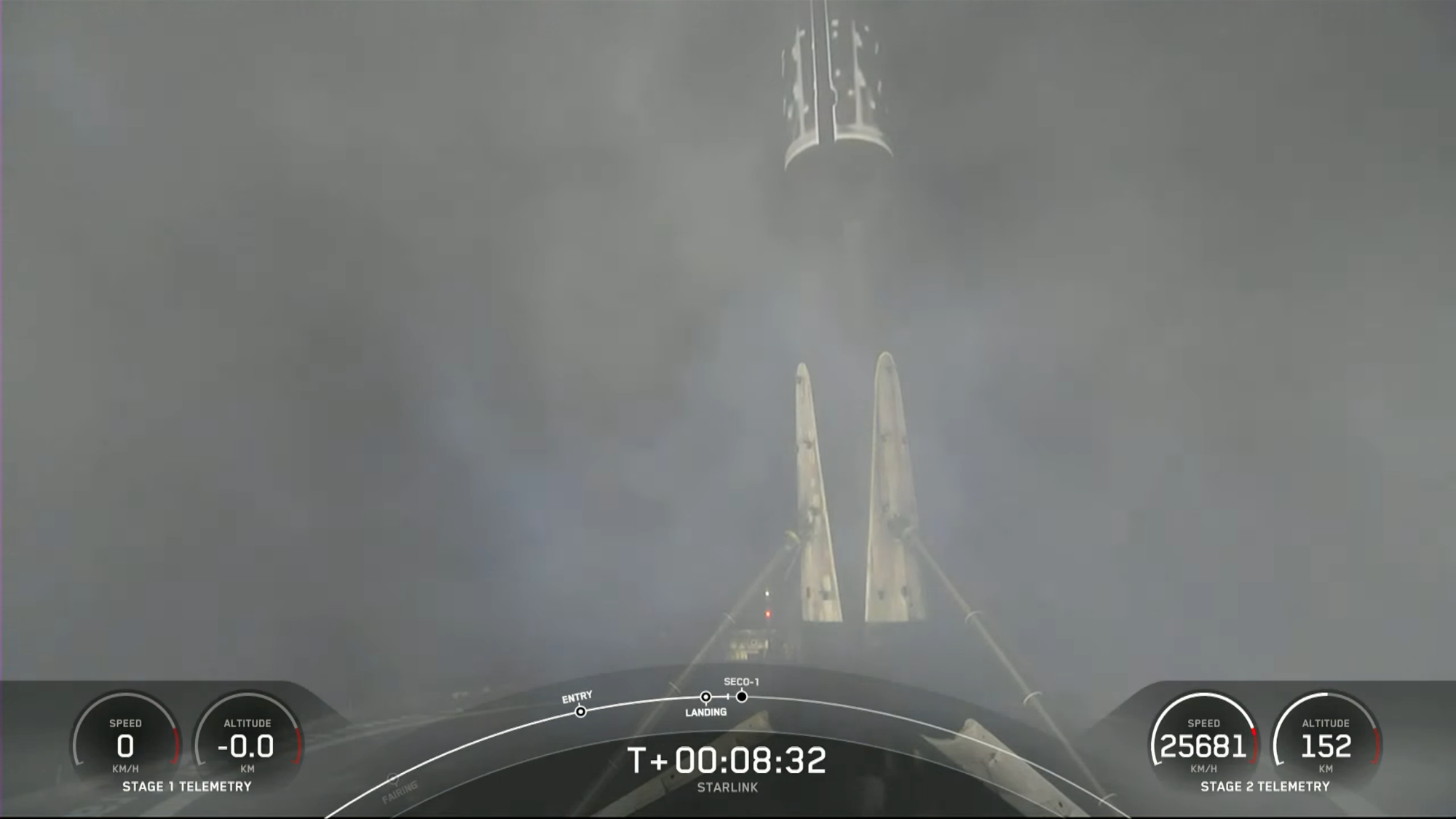SpaceX launches 22 Starlink satellites, lands rocket at sea
SpaceX launched 22 Starlink satellites to low Earth orbit and landed the returning rocket at sea on Wednesday night (Aug. 16).
A Falcon 9 rocket topped with the Starlink satellites lifted off from Florida's Cape Canaveral Space Force Station on Wednesday at 11:36 p.m. EDT (0336 GMT on Thursday).
The Falcon 9's first stage came back to Earth, landing at sea on the SpaceX drone ship A Shortfall of Gravitas about 8.5 minutes after liftoff. It was the 13th launch and landing for this particular booster, according to SpaceX.
Related: Starlink satellite train: How to see and track it in the night sky
The rocket's upper stage continued carrying the 22 Starlink satellites toward low Earth orbit (LEO). If all goes according to plan, the spacecraft will be deployed there about 65 minutes after launch.
Wednesday night's liftoff was the first of planned back-to-back Starlink missions. A different Falcon 9 was scheduled to loft 21 of the satellites from Vandenberg Space Force Base in California on Thursday (Aug. 17) at 3:01 a.m. EDT (0701 GMT). That didn't happen, however; SpaceX pushed that second launch back to early Friday morning (Aug. 18).
Starlink is SpaceX's broadband constellation, which is enormous and getting bigger all the time.
Breaking space news, the latest updates on rocket launches, skywatching events and more!
Elon Musk's company has launched nearly 5,000 Starlink satellites to date, most of which are currently operational, according to astrophysicist and satellite tracker Jonathan McDowell.
Editor's note: This story was updated at 8:30 p.m. EDT on Aug. 16 with the new launch time of 11:36 p.m. EDT for Wednesday's mission. It had been targeted for 9:55 p.m. EDT. The story was updated again at 11:55 p.m. EDT with news of successful launch and rocket landing.

Michael Wall is a Senior Space Writer with Space.com and joined the team in 2010. He primarily covers exoplanets, spaceflight and military space, but has been known to dabble in the space art beat. His book about the search for alien life, "Out There," was published on Nov. 13, 2018. Before becoming a science writer, Michael worked as a herpetologist and wildlife biologist. He has a Ph.D. in evolutionary biology from the University of Sydney, Australia, a bachelor's degree from the University of Arizona, and a graduate certificate in science writing from the University of California, Santa Cruz. To find out what his latest project is, you can follow Michael on Twitter.

